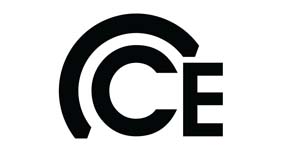There’s an ancient Greek proverb that states: “A society grows great when old men plant trees whose shade they know they shall never sit in.”
Implementing and nurturing sustainability programs on campus is a great way for educational institutions to plant their proverbial trees – and it involves facing and overcoming challenges like climate neutrality, reducing greenhouse gas emissions, and providing effective education and research on climate change. With the right use of smart technology, these programs can not only be more efficient, but cost-friendly as well.
In response to the prevalent budget cuts and financial restrictions facing education, smart technology is available that allows institutions to “self-fund” sustainability efforts at minimum investments. Here is how you can plant roots while teaching students ways to address air quality, water conservation, and energy reduction.
Air quality has been shown to have a direct impact on a child’s ability to learn, as well as their overall health. With students spending approximately 30% of their day in a classroom, monitoring the indoor air quality of a building is imperative – especially for children whose lungs are still developing. A variety of health problems can be caused by air pollution, particularly by ultra-fine particles, which are the smallest pollutants found in diesel soot and other components of combustion exhaust.
Clean air is essential for healthy lungs and normal lung development. Those who are exposed to elevated levels of air pollution are at a greater risk of having impaired lung function by age 18. Poor indoor air quality has also been linked to increased absenteeism, lower scores on standardized tests, and overall impaired academic performance.
Investing in air filtration systems means reducing your students’ exposure to particulate matter, helping to reduce the health effects that school children could suffer by being exposed to these pollutants while contributing to the battle against air pollution within your community.
Panel-filtration technology can be purchased for less than $300 and have been shown to reduce airborne concentration of ultra-fine particles and black carbon by almost 90%, and standalone cleaning systems can reduce indoor particle concentrations by as much as 94% while meeting strict noise-level requirements.
According to the Environmental Protection Agency (EPA), the average household wastes almost 38,000 liters of water every year due to leaks, and enough water is wasted by an average family in a single week for an entire year’s worth of laundry. If that’s just in a typical home, imagine how exponentially greater the amounts of water and money wasted are for an entire campus or district!
Approximately 23% of campuses catch leaks within the first month, with the cost of one leaky toilet averaging $900 per year. By closely monitoring water consumption, districts can reduce water consumption by an average of 18% with insurance reduction up to 10% when schools consistently monitor their water use.
Using smart technology to find leaks and respond quickly allows facility and maintenance personnel to focus their time and resources where most needed, monitor water consumption down to the minute, be alerted to leaks and running toilets and sinks long before anyone on site even realize there’s a problem, and even benchmark water usage to identify inefficiencies and reduce water bills.
Technology such as water and sump pump sensors provide low-cost, big data solutions that enable facility and maintenance teams to focus on the most critical areas without retrofitting equipment or plumbing across the board to manage risk. Institutions can see an ROI for this cost-effective smart technology in just one or two months while making tremendous headway in sustainability efforts.
Empowering facilities management teams with centralized control of HVAC systems can help reduce energy consumption, quickly diagnose inefficient equipment, and better manage facilities and classrooms.
A persistent challenge schools face with energy consumption is how to balance and improve efficiency with very limited budgets. Implementing HVAC-monitoring smart technology provides facilities management with remote access to monitor and configure equipment, locate where maintenance is needed, and identify which units are underperforming.
Having the ability to remotely adjust thermostats based on room usage (even implementing “night mode” for afterhours) is another important aspect to consider. Affordable technology gives a facilities team increased control to stay on top of energy consumption and reduce overall consumption by up to 40% without compromising comfort. Best of all, this technology is scalable and original equipment manufacturer (OEM) agnostic, which is important to consider when a school has not standardized in the past.
The importance of implementing sustainability initiatives for your school cannot be overstated; between hiring Chief Sustainability Officers and negotiating budgets, it’s clear that the steps towards a sustainable future are being taken now.
When we implement green practices on campus, we also teach the next generation – the students – how important and easy it is to be more environmentally conscious. Current and incoming students are tech-savvy, and seeing smart technology used in this manner will only help to inspire future green initiatives. Whether environmental consciousness is taught in the classroom, encouraged through science projects, or just openly shown in action around the classrooms, there’s no mistaken the impression it will have on the next generation of decision-makers and influencers at a young age.
Achieving that green goal on campus takes the help of another type of green – budgets – but using smart technology to get there doesn’t have to break the bank. For minimal capital investment, smart technology can be utilized to help increase the efficiency and environmental friendliness of your facilities… helping your proverbial sapling start off on the right root.

Rob Gallant is the General Manager at Carrier Enterprise, LLC and works with B2B corporate and educational systems nationwide to address sustainability needs and education from a supply chain and solutions perspective.